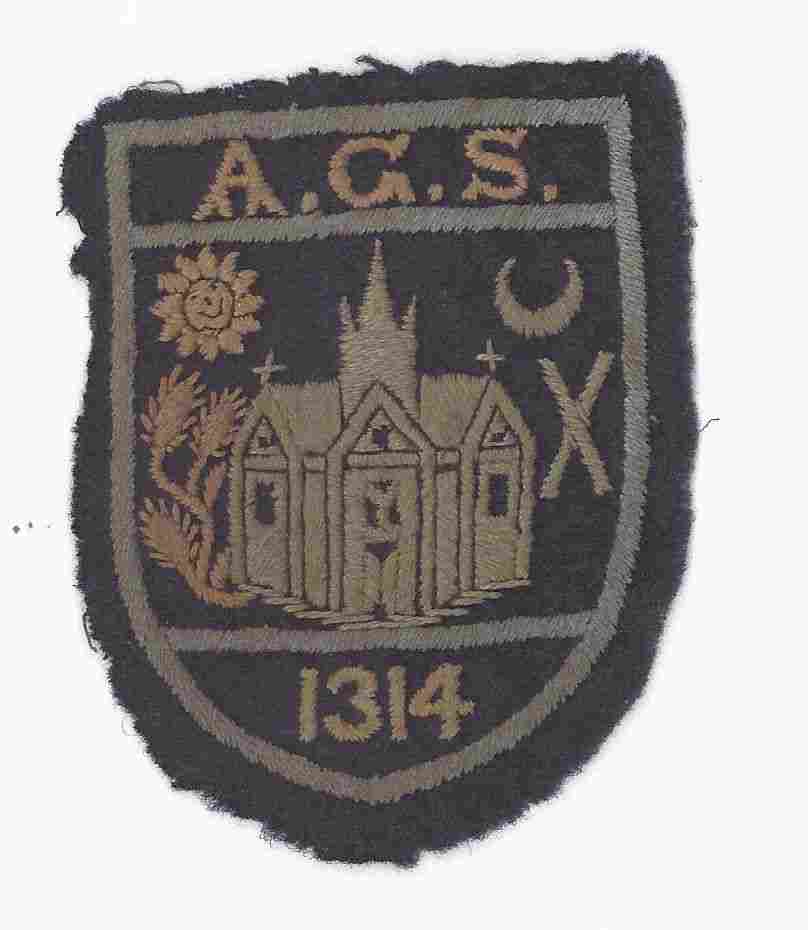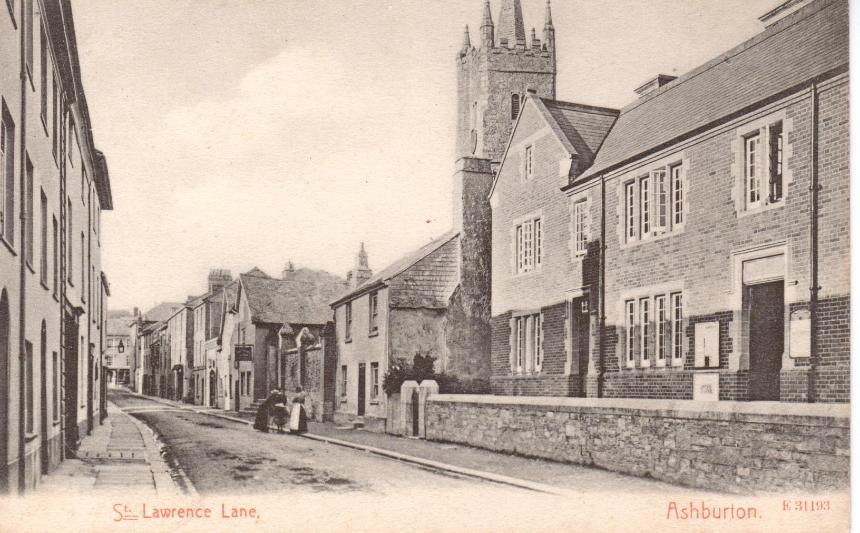
Above: St Lawrence Lane (sometimes known as Station Road) showing the St Lawrence Chapel tower
From my own collection
Although the Pope claimed the right to appoint bishops in the 1300s, in practice this was done by the king, who inevitably selected candidates who would be of use and support to him. Walter Stapledon was in the king's service when chosen to be Bishop of Exeter in 1307.
Nicholas Orme, The Church in Devon 400-1560, Exeter 2013, p72
Through this appointment he automatically became Lord of the Manor of Ashburton. (see Domesday Book and 1100s and 1200s under Early History)
A major contribution of his to the town was the founding of a chantry at St Lawrence's Chapel, which ensured that the building was maintained (at least in theory). The word chantry is a Middle English word connected to French and Anglo-French words meaning 'singing', or 'to sing'. (Shorter Oxford English Dictionary) - when used to describe a building it means a chapel or altar where a priest or priests sang masses for the soul of the founder, or for those people the founder named.
Right: Arms of Walter Stapledon, Exeter Cathedral
Photgraph by 'Lobsterthermidor' September 2013 (own photo) [Public domain] via Wikimedia Commons
Below:
Charles Worthy's translation of the 'Chart of the Burgesses of Ashburton concerning the chantry in the chapel situated in the court of the Bishop in the same town' This is presumably the agreement to maintain St Lawrence's Chapel, 1314, ref D & C 612 in the Cathedral archives in Exeter. The Bishop's ordinance for the foundation of St Lawrence's Chapel, 1314, is also in the archive - ref D & C 613
The Lords Robert, by the Grace of God, Abbot of Tavistock
Matthew, Prior of Plympton
Peter, Abbot of Buckfast
Joceline, Prior of Totnes
Roger de Charleton, Archdeacon of Totnes, and others.
Given at Ashperton on Friday, the Eve of the Assumption of the Blessed Mary, in the year of our Lord 1314.
Ashburton and its neighbourhood, Charles Worthy, L B Varder printer and publ., East St 1875 p xvi and xvii of appendix
*******
The Chronicle of Exeter, 1205-1722, Todd Gray, The Mint Press, Exeter, 2005, pp24,25
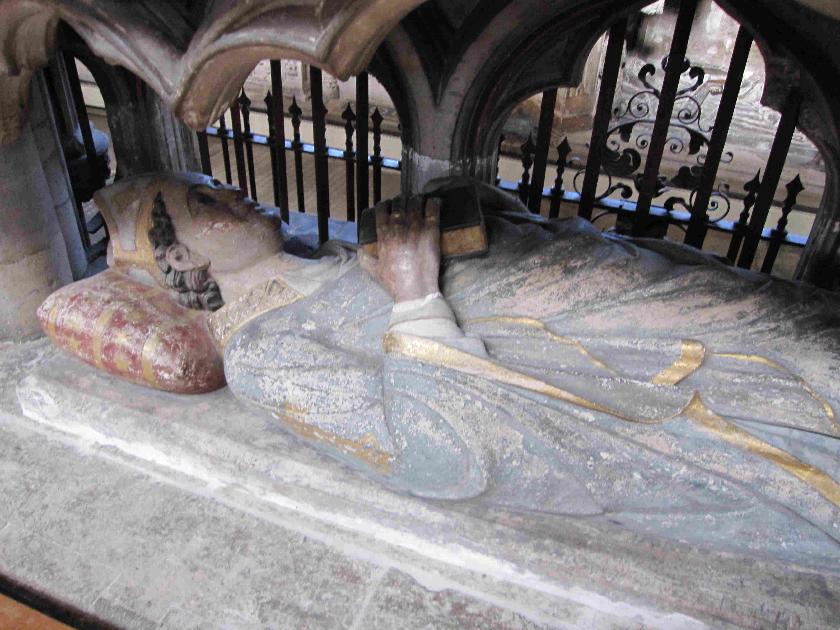
My own photograph 2016. Many thanks to the Cathedral
1497-98
'Expenses.......To the priest of St Lawrence present at the said dirge* and mass - 4d
*The dirge, a particular prayer for the dead, was on this occasion said for Thomas Tankret.
Churchwardens' accounts of Ashburton, 1479 -1580, Alison Hanham, Devon and Cornwall Record Society 1970, p24
In the mid 1500s (1544 - 1551) there was a dispute between John Predyauxe of Orcherton, Modbury and defendants George Forde, gentleman, John Dolbeare, Lawrence Ellys and others on the detention of deeds relating to lands of the chantry of St Lawrence in Ashburton, Devon.
Exeter and Pymouth Gazette 7 July 1860, p6 col4
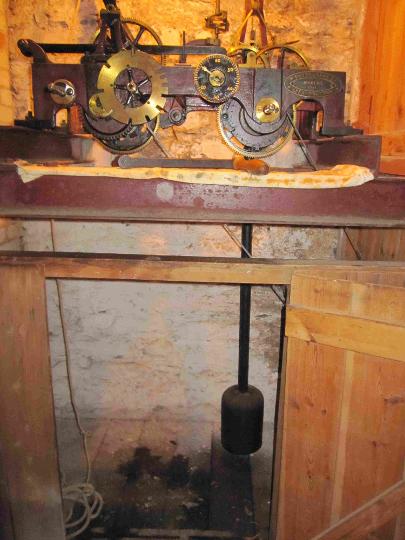
When the old market house was demolished in the mid-1800s, the three clock dials from the old market house were overhauled by Mr J Horson, and refitted in the tower of St Lawrence Chapel.
Exeter and Plymouth Gazette 14 June 1851 p4 col1
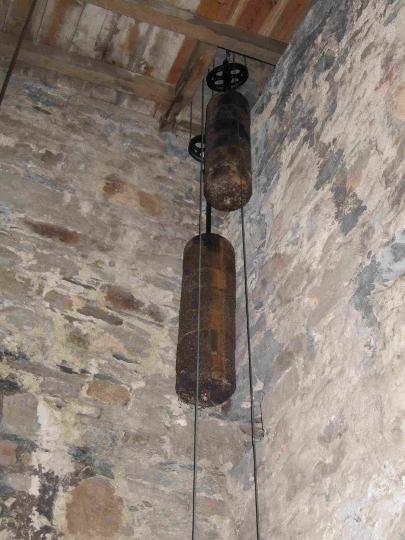
Above: The weights for the clock.
My own photograph 2015. With thanks to the Guild of St. Lawrence.
In a letter to the Western Morning News in 1938, Mr B J Langler gave some information about the clock and bells. The bell in the St Lawrence Chapel tower (on which the hour was struck) was inscribed, he said, with 'Thomas Bilbie, Cullompton. Fecit 1780.' He added that the clock itself only dated from 1911.
Western Morning News 23 August 1938 p11, col2
The clock is a double three-legged gravity escapement, hour striking flatbed turret clock. It was made by William Potts & Sons Ltd of Leeds and set going on September 30th, 1911.
Potts, Michael S, Potts of Leeds, Five Generations of Clockmakers, 2006, p374
Many thanks to Al Cobb for this information
Ashburton Grammar School
Ashburton Grammar School was based at The Chapel of St Lawrence, but the date of its foundation is uncertain. In his history of the school W S Graf notes that 'there is no obligation on the priest to keep a school and there is no evidence to show that he did' (Ashburton Grammar School 1314 – 1938, W. S. Graf, Ashburton 1938 p 2) But he adds 'Teaching was almost always one of the activities of the priest of a chantry chapel, and in the case of Ashburton, we have, at the time of the Reformation, a well established tradition that there had been a school conducted by the priest' (ibid)
During the Reformation of Henry 8th, an act of 1545* resulted in Commissioners going around the country surveying the chantries. At Ashburton they reported 'The Guylde called saynt Larences Guylde, founded by ______, For the contynual fynding of a pryste, As well to praye for the Donors of the landes belonging to the sayd guylde and other benefactors of the same, As also to kepe a scole for the erudycion of children for ever....' (op cit p 4)
* The Chantries Act 1545 (37 Hen 8 c 4) The results of these assessments are in the Chantry Certificates http://www.history.org.uk/
Graf says 1546
I believe (but am not sure) that the relevant documents are in the National Archives, ref E301/15
Devon Heritage Centre, ref 48/14/68/5a-b , 1649
In 1905 reports were made to the Charity Commissioners on endowments made within individual parishes. The report on Ashburton made extensive reference to an earlier report of 1822, of which the following are extracts:
Grammar School.
By deed, bearing date 27th December 36th Elizabeth, Hugh Pomeroy, John Blundell, George Knolle and John Rewell, granted and confirmed to John Caunter and others, of Ashburton, and their heirs, their house or chapel, called Saint Lawrence's chapel, and a piece of land adjoining, called the Chapel-yard, and the said John Caunter and others thereby covenanted with the said grantors, to permit the homage of the manor and borough of Ashburton for the time being (according to an ancient order and custom used in that behalf) to have the use of the said chapel and yard, yearly, at the two law days holden in the said manor and borough.....provided that if the said John Caunter and others.....should convert or employ the said house.....to any other use or employment than for a continual school-house, or keeping of a school for the education, instruction, or bringing up of children in the said place, or should suffer the said chapel to fall into decay, whereby the use of a school-house should cease, that then the said grant should be void.
This chapel has been usually repaired out of the revenues of the church-lands. It is now in a bad state of repair, notwithstanding which the grammar school is kept in it, and parish and other meetings, and the courts of the lords of the manor are held in it. No rent is paid for it.
(Details of various deeds follow, of lands outside the parish - names mentioned are Christopher Lapthorne, Thomas Ford, William Coyte, George Cruse and his son Thomas, Mr Wearing)
....Edward Gould, by will dated 16th March 1735, gave to the minister, churchwardens and sidesmen of the parish of Ashburton 200l (£200) in trust, to be laid out in lands, and the yearly profits thereof....to be yearly applied in the augmentation of the maintenance of the schoolmaster of the free-school of Ashburton, as long as he should apply himself with diligence to the business of a schoolmaster there.....and if not, then the said yearly profits were to be...laid out in sixpenny loaves of good wheaten bread...to be distributed amongst the poor of the said parish, and so continue until the said schoolmaster should better approve himself....
Lawrence Blundell, by will, dated 18th March 1637, gave towards the maintenance of the school at Ashburton, yearly, during the life of his wife, the sum of 40s and after her decease, the sum of 40s more, being in all the sum of 4l (£4) to be issuing out of all his messuages lands and tenements within the parish of Ashburton quarterly, for ever.
This annuity of 4l is payable in respect of a house formerly called the Mermaid, and now the property of Sir Lawrence Palk....
(Mention of gifts by Mr Warren and Mr Acland).
Report to the Charity Commissioners, HMSO 1908, pp10-12.
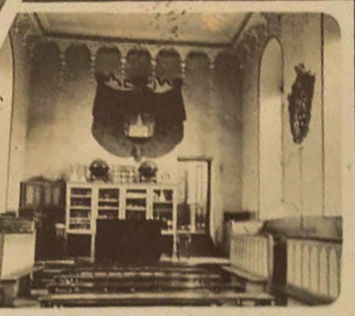
'Ashburton, Head Master Rev John White.
The Grammar School was founded in the 36th of Elizabeth, by several benevolent individuals, and endowed with certain lands for the maintenance of the master, amounting to about 60l per annum. The period of admission is not limited to any age, and the master receives all such as are sent to the school as grammar scholars.
Laurence Blundell, by will dated 18th of March 1637, and proved in the Prerogative Court of Canterbury, in addition to an annuity of 4l for the maintenance of the school at Ashburton, gave the sum of 4l to be issuing out of his lands etc. at Ashburton, to a poor scholar of the said parish to the University, and tenable to MA. Mr. Blundell also gave to one poor scholar of Ashburton, for his maintenance at the grammar school and at the University if he should be fit for it, the sum of 6l a year, to be issuing out of all his said premises; the same to be paid to and for such scholar as should be appointed by his executors and their heirs, the Vicar of Ashburton etc.
The annuities of 4l and 6l are considered to be payable in respect of two parcels of land, containing by estimation 80 perches, and a messuage called The Mermaid; and two closes containing by estimation, six acres, called the Rock Parks and the Barley Arish, and a small plot of ground adjoining thereto; and a close, called Cook's Close, containing one acre and a half; and a messuage and garden in Heavyhead Lane, and another messuage and garden in Heavyhead Lane, all within the borough of Ashburton, which were purchased subject to these rent charges in 1761, by an ancestor of Sir Lawrence V. Palk, Bart., the present proprietor thereof. '
Liber Scholasticus, an account of the fellowships, scholarships and exhibitions at the Universities of Oxford and Cambridge.....also of such colleges, public schools, endowed grammar schools....as have university advantages attached to them, printed for C., J., G. and F. Rivington, London, 1829, pp146,147
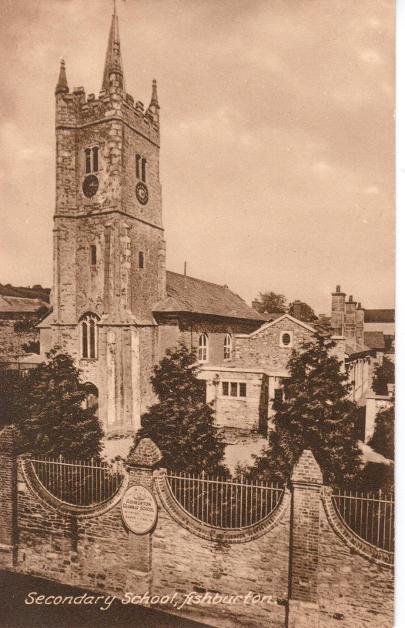
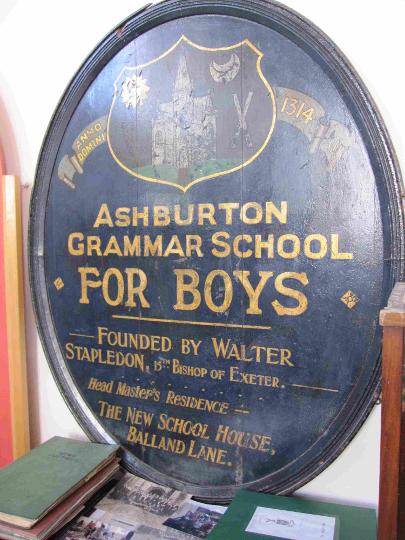
Above: The plaque is now housed inside the Chapel.
My own photograph 2015. With thanks to the Guild of St. Lawrence.
Left: The Grammar School
From my own collection
The appointment of master rests with the vicar, trustees, and six sidesmen, which last are elected by the ratepayers in vestry, chiefly on political grounds, and consist of tradesmen in the town, and seem to have no other duties than those connected with the school. When the head mastership was last vacant, the number of trustees had been greatly reduced, and the sidesmen practically decided the appointment. It is said that politics on these occasions play an important part in determining the fitness of the candidate. The present master is in orders, and a graduate of Dublin University.
The school is held in what used to be the chapel of S. Lawrence, which forms a handsome and spacious room with a gallery at one end, the entrance being under a lofty tower. It is about one-eighth of a mlle from the master's house, and is in the centre of the town. There is no playground there, and the day boys are not allowed to make use of the one attached to the master's house.
There were 18 boys present when I examined the school, of whom three were the master's sons, and two were boarders, leaving 13 boys from the town. By an indenture entered into by the master on his appointment, Latin, Greek and mathematics are to be taught gratuitously; for any other instruction 5l 5s is charged; as a fact all paid this sum. He had no assistant. When I visited the school a motley group of urchins were awaiting the opening of the school-room door; there was no covered place for them to wait in case of rain. There were some of them who could only just read. Out of seven of the upper boys, two construed Caesar creditably, and knew some grammar. One boy, the son of a butcher, aged 15, did best in Latin, arithmetic and Euclid, and did credit to the school. In writing from dictation, nine upper boys averaged three mistakes each; the best having one, the worst eight. The upper boys had a fair knowledge of elementary arithmetic and algebra, the lower had no idea of notation. The knowledge generally of history and geography was very indifferent.
The boys seldom stayed beyond 14. There were no examinations at the school except those conducted by the master himself. or occasionally by a friend. The two Gifford Exhibitions, founded in 1826 and attached to this school, and in default of candidates thrown open to the county, had not been held by a boy from the school for more than 20 years...
...The grammar school, in the state in which I saw it, cannot be said, in proportion to its endowment, to be a very useful institution...The feeling of the town was one of some dissatisfaction at the existing state of things, though the leading inhabitants were exceedingly cautious in expressing any opinion upon the matter.'
Schools Inquiry Commission, vol 14, South Western Division, Special Reports of Assistant Commissioners, London 1868
*******
Some pupils:
Richard Carlile*:
When I got to a five-penny school it was considered an extravagant affair, too expensive to be borne, and a successful effort was made to put me upon the list of free scholars. From the age of six to nine I was at writing and arithmetic; from nine to twelve at Latin. But the sum of all this narrative is that though at twelve years of age I left school, with a knowledge of writing, arithmetic, and the Latin language, and a pretty good knowledge of words and the tact of spelling them, I was wholly ignorant of grammar. I remember well when my severe old writing and ciphering master was told that I was about to leave him to learn Latin, he said, 'Hi, hi! you had better learn English first'. This old man never gave me a chastisement without saying, 'There, you larned rascal, take that! You will thank me for it by the time you are twenty years old.' For my part, I had no more idea of school education than that it was a pastime for boys, and I sought an exchange from old Hanaford's to the Latin school with no idea but that of more play and less punishment, and because all the better dressed boys were there; but I found after that this smattering of Latin gave me everywhere an air of superiority, and among such company as I was able to keep I passed for a scholar. The very vanity and flattery attached to this state of mind, I believe, induced me to seek further knowledge. It is a singular circumstance, but I can trace both the Quarterly Review and the Republican to the free schools of Ashburton. Wm. Gifford* and Dr. Ireland, the Dean of Westminster, both received the rudiments of their education at these free schools, and I came after them to undo, I hope, all the mischief that they as politicians have done. These free schools of Ashburton were not so free for the poor as for the rich; one of them was a school for Latin and Greek wholly, free by endowment, and here only the children of the richer people were admitted. Here, also, I followed Dr. Ireland and Wm. Gifford.
From Richard Carlile to Eliza Sharples Carlile, quoted in The battle for the press, as told in the story of the life of Richard Carlile, Theophila Carlile Campbell (his daughter),London 1899, chapter 2http://www.gutenberg.org/files/38370/38370-h/38370-h.htm- Accessed 17-11-2013
* Born 1790. See Famous Ashburtonians
*******
1851 census: HO107; Piece: 1871; Folio: 287; Page: 2
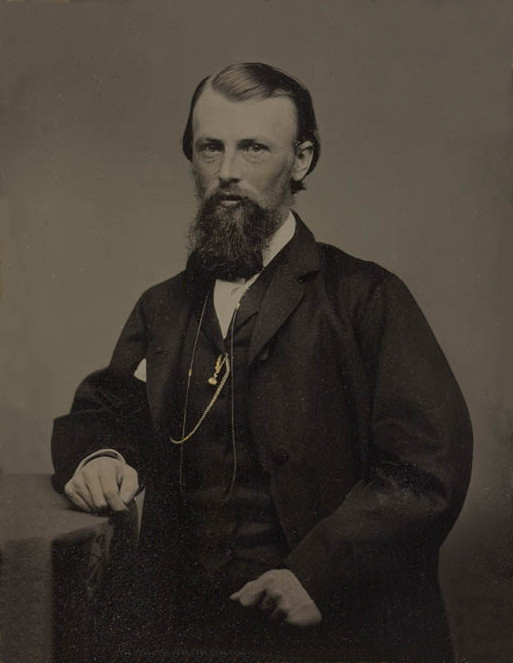
By Thomas Hill originally uploaded by users Diceman, Rocketfrog on en.wikipedia [Public domain], via Wikimedia Commons - Accessed 23-6-2014
William John Wills
In
1860 William John Wills, selected by Robert O'Hara Burke, was part of
the first expedition to cross Australia from south to north.
Born in January 1834, Wills was the son of a Totnes doctor, but in his twelfth year he attended Ashburton Grammar School.
Hard-working but nervous, he was 'far from brilliant' (Western Times) and did not excel at any examinations. He left the school in 1850 to become apprenticed to his father. He emigrated to Australia in 1852.
The initial expedition was a success: Burke and Wills plus two other team members were the first people to make the south/north crossing, proving in the process that there was no inland sea. But on the return journey they failed to meet up with the rest of the members of the expedition, and died through disease and lack of food and water. John King was the only eventual survivor.
Western Times 21 February 1863 p2 col2
http://www.davidreilly.com/australian_explorers/- Accessed 21-6-2014
Arthur Harry Church
Arthur Harry Church was born in Plymouth in 1865, and according to his obituary was the son of a saddler.
http://www.freebmd.org.uk
Obituary notices of Fellows of the Royal Society, vol 2, no 7, A G Tansley, pp432-443
The 1881 census shows him boarding with the Master of the Grammar School, James Mortimore. Aged 16, he was a pupil-teacher.
Later he went to University College, Aberystwyth, gaining at external London first class B.Sc degree in Botany.
1881 census RG11, Piece 2161, Folio 23, p2
Bristol Mercury, 7 January 1891 p7 col6
He then received a scholarship to study botany at Jesus College, Oxford, where he achieved a first. 'Fortunately I learned my botany before I came to Oxford...' (quoted on the website http://www.pictureoxon.com - Accessed 30-10-2015)
He married Emma Palmer Pratt in 1898.
By 1911 he is living in Oxford (although he has a postal address in Dawlish), with his wife Emma Palmer and two daughters. He is a university lecturer in botany at Oxford.
FreeBMD
1911 census RG 14, Piece 12697, Schedule no 150
According to the Natural History Museum he 'was considered one of the ablest and most original botanists of his time.....his lectures at University were said to be delightful' and his art 'inspirational'.
Church became a Fellow of the Royal Society in 1921, and died in 1937.
http://www.nhm.ac.uk/
Sidney Endacott was at the school in 1885 - see Poets and artists, under Famous Ashburtonians.
Reg Andrews: 'From the Board School I was sent to the Ashburton
Grammar School, under the tutelage of that quite famous headmaster,
James Mortimer. Here indeed was discipline, spelt with a very large D, and I do not think we boys really resented it. I left the grammar school in 1909 and went as office boy to that highly esteemed firm of Edwin Tucker and Sons, Ltd., agricultural seed merchants and maltsters, where I remained for 55 years. Two grammar school pupils, both Ashburtonians, who later made their mark in the world were Dr John Satterly, who became the professor of physics at Toronto University, and Mr George Foaden who became the agricultural advisor to the Egyptian government in Cairo. Both were half a generation before my time.'
From the reminiscences of Reg Andrews, born 1893. Many thanks to Dave Hodge-Brooks and Ernie Smerdon for these.
* ******** *
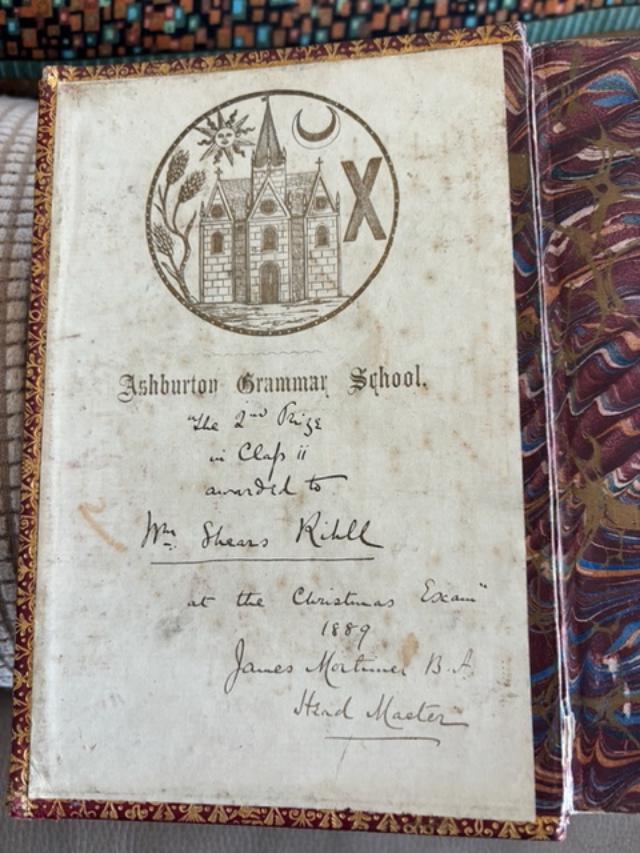

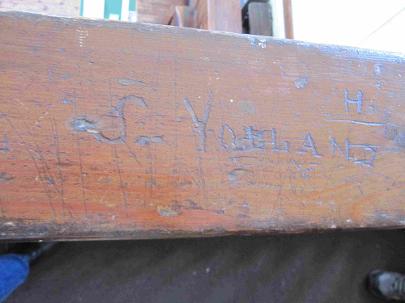
Left: S Yolland carved his name in the balcony that is accessed from the St Lawrence Tower.
My own photograph 2015. With thanks to the Guild of St. Lawrence.
In 1918, after an examination, six free places were awarded at the Grammar School. Raymond Tape, Gordon R Williams and Hilda Perkins were the successful candidates from Ashburton Council School; Eric Pinney and Ethel Midgeley came from Buckfastleigh and Vida Middleton was from Totnes.
Western Times 19 June 1918 p3 col1
Ashburton Grammar School, W S Graf, Ashburton 1938, p27
The following pupils contributed:
Betty Ayres (13)
James Badcock
Kathleen Bannerjee
Raymond K Beer
Marjorie Burrell
Leslie J Clake
Eileen Cording
Patrick Daw
Roma Dawe (13)
Gwen M Dyer (14)
Hilda Gill (13) [probably = Hilda W Gill below]
Janie Hannaford (13)
Doris M Head [probably = Doris Head below]
Alice Homewood
Kathleen Hutchin
Barbara Jones
Nora Knapman
Freda Marshall
Charlotte Matthews (13)
Josephine Maunder (14)
Annie Moore (12)
Leslie Moorse
Ruby Northcote
Ethel Owens
Harold Palk
Ruth M Penny
Iris Perring
Ursula Phillott (12)
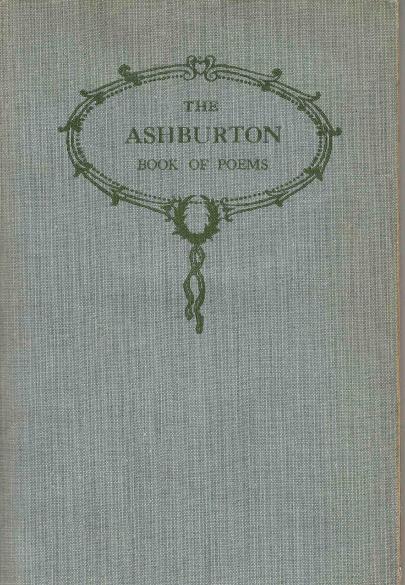
From my own collection
James S Rhodes (14)
Norah Rogers (14)
Edith Rowland (14)
Nellie Saffrey (13) (14)
Charles F and Arthur J Simpson
Marjorie Sowerby (13)
Ethel Spurling
Cora Squire
Susanne Sutor
Nora Tapley (13)
Eileen Thorne
Peggy Trembath (14) (15)
Kaye and Louis Webb
Bernice Winsor (14)
Irene D Wood [probably = Irene Wood below]
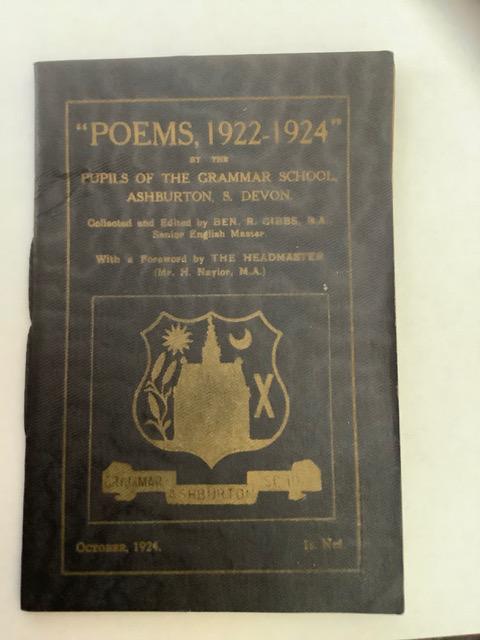
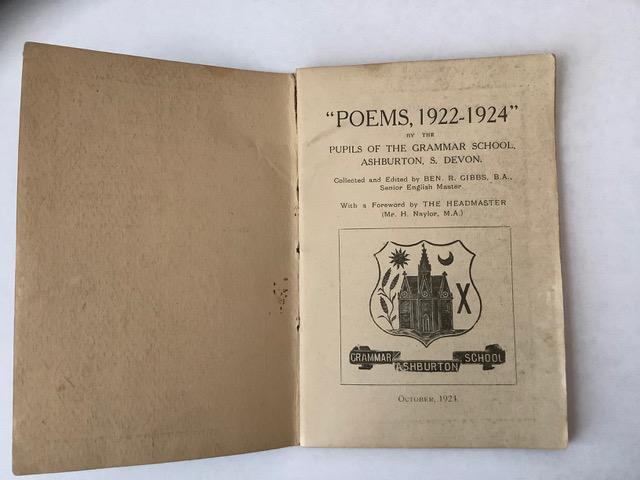
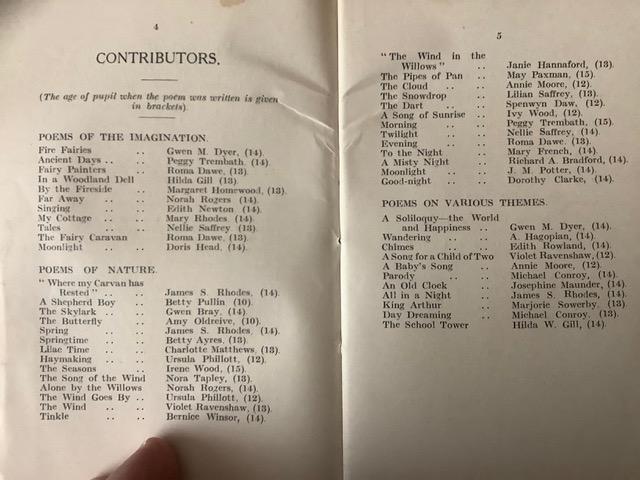
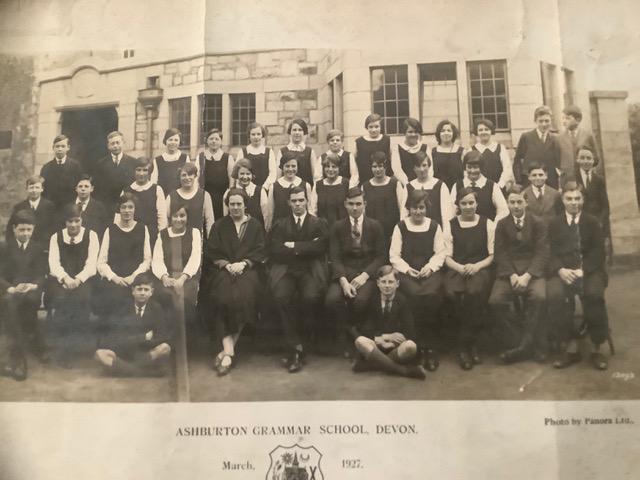
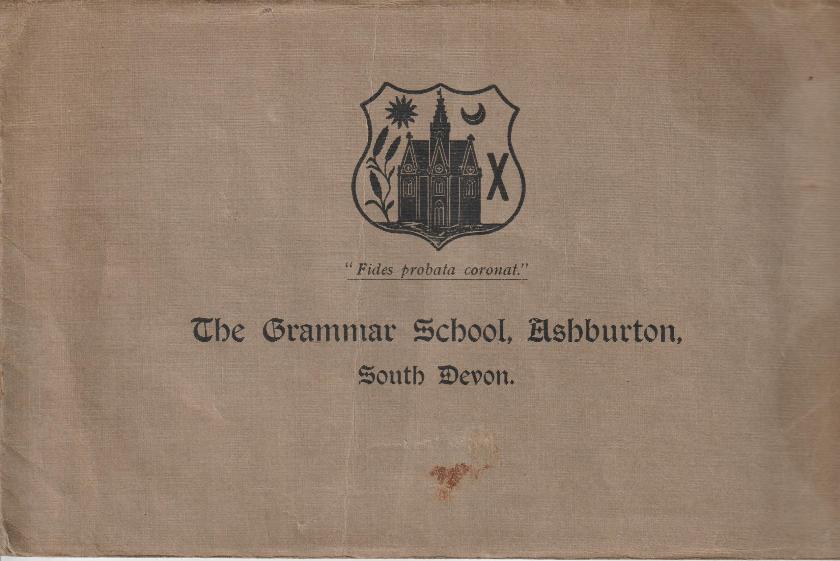
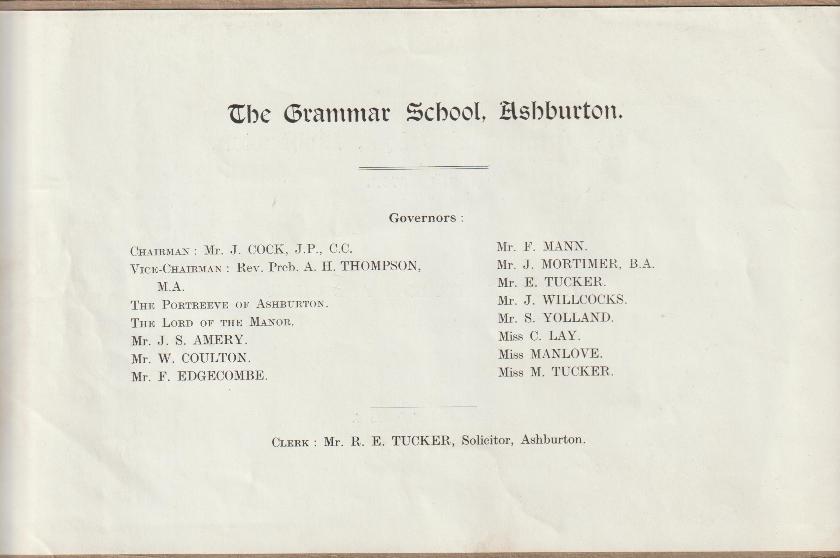
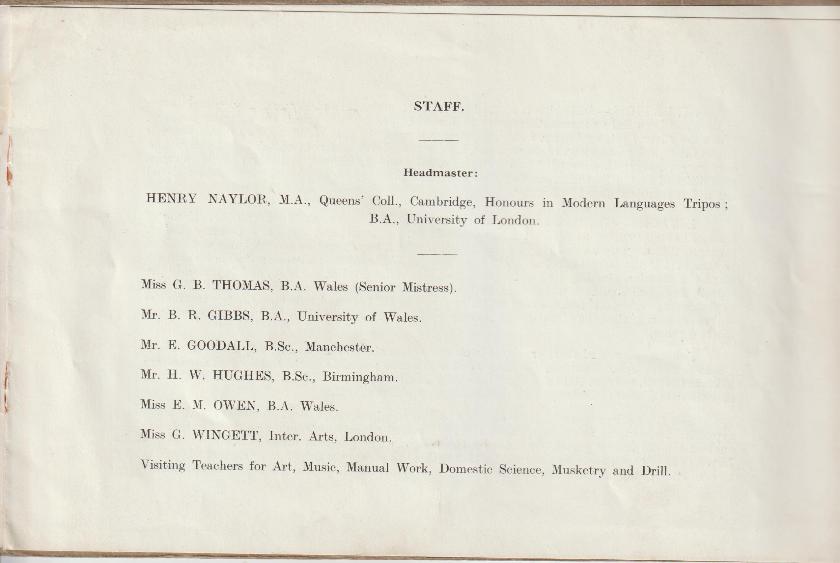
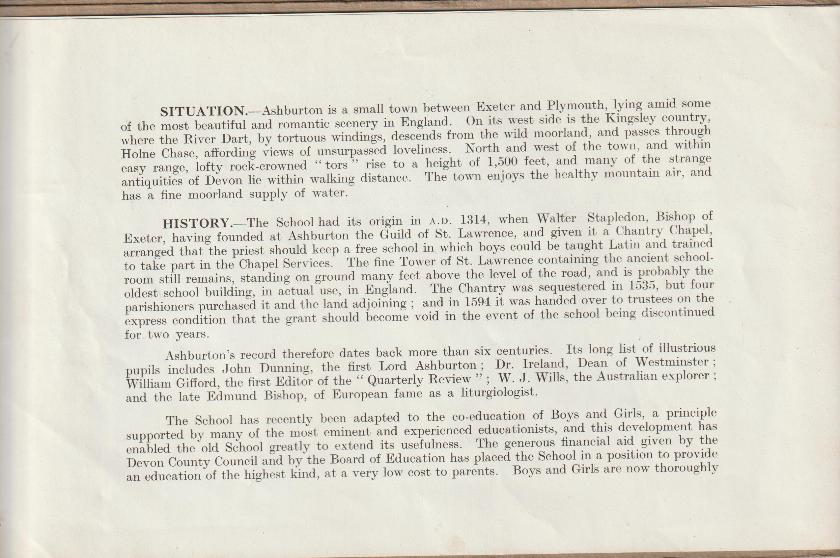
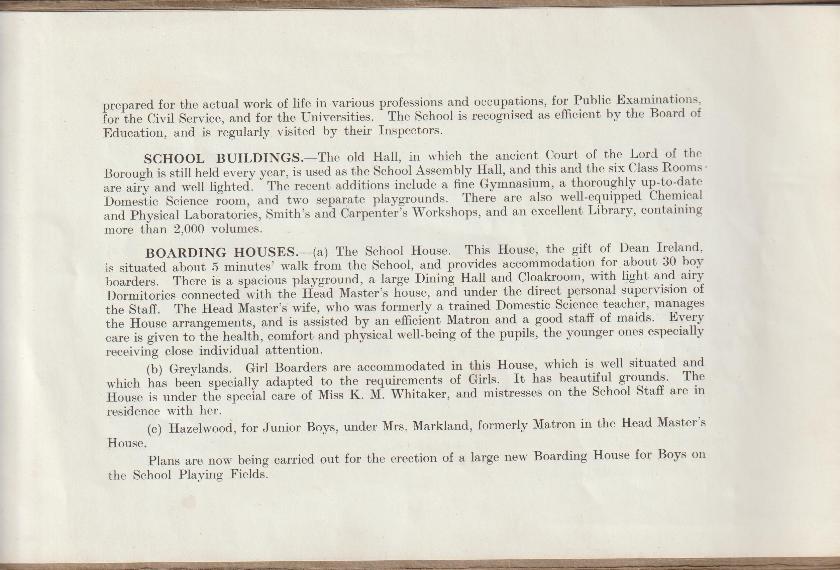
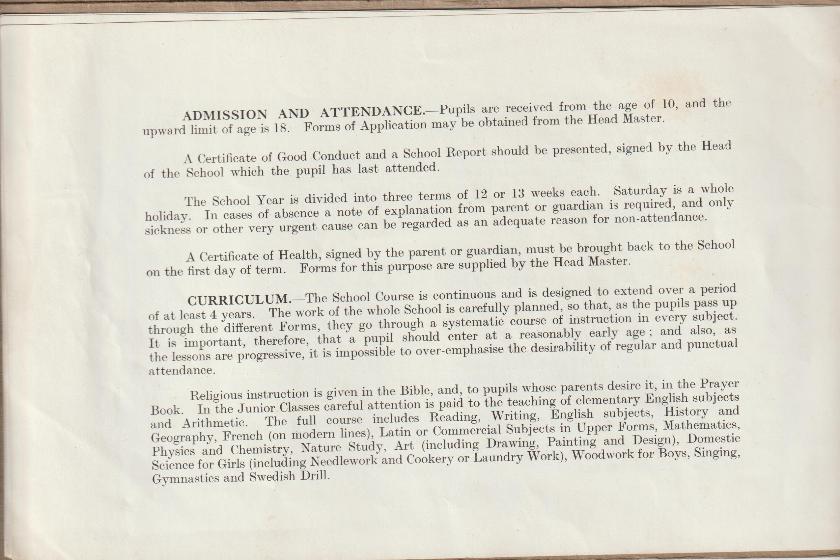
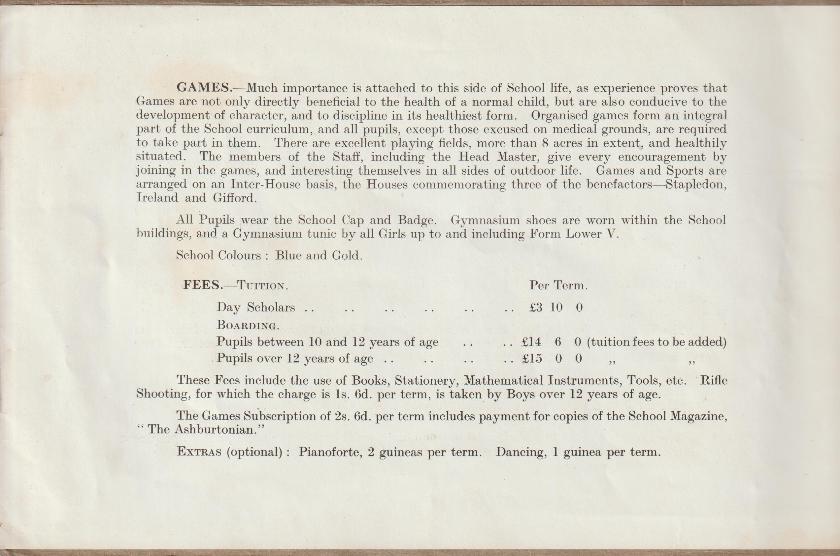
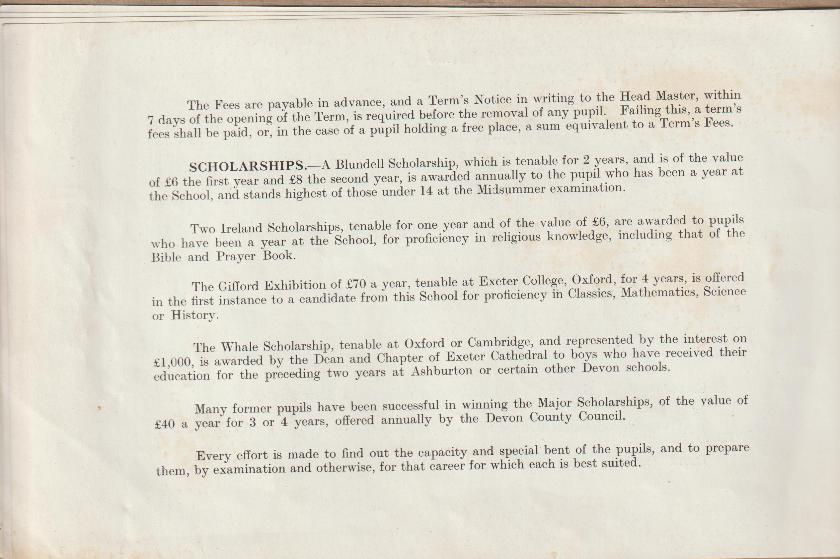
The Rev. Fitz. Henry Hele was chosen as Master in 1832, following the resignation of the Rev. John White.
North Devon Journal 6 December 1832 p3 col4
In 1837 the Rev. Wentworth Bird was appointed Master.
North Devon Journal 19 October 1837 p3 col6
1839 W. Baxter was the Master. It cost 35 guineas for a pupil under 12 to board, and 40 guineas for pupils over that age.* Two Exhibitions and two scholarships to Exeter College, Oxford, were available for pupils educated at the school.
Western Times 2 March 1839 p3 col6
Other advertisements show that this is per annum.
1841 The Rev. George P. Lewis was the newly elected Master.
Two years later the Rev. G. Lewis was leaving the Grammar School to become Chaplain of the Honiton Union.
Western Times 24 July 1841 p2 col2
Western Times 13 May 1843 p3 col3
When electing a new Master, the Trustees stated that the endowment was £83 10s. 'exclusive of a very good house and walled garden, which belongs to the Master.'
Western Times 20 May 1843 p1 col3
In 1845 Reginald Cleave was awarded one of the scholarships to Exeter College.
Western Times 19 April 1845 p2 col6
J. B. Paige was Headmaster by 1848. T. White was Second Master, and the Third Master was Mr. Barneet*
Western Times 23 December 1848 p1 col1
* Barnet and Barnett elsewhere
When Mr. Paige left in 1859 he sold a large quantity of his own possessions. They included mahogany furniture, 30 feather bolsters, 30 iron bedsteads, 40 hair and straw mattresses, 100 blankets and 'an excellent shower bath.'
Exeter and Plymouth Gazette 9 July 1859 p1 col4
http://www.freecen.org.uk
Right: Badge of Ashburton Grammar School.
Many thanks to Roy Martin for this photograph
